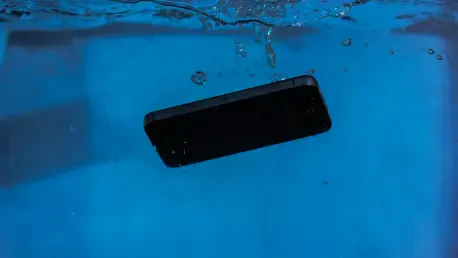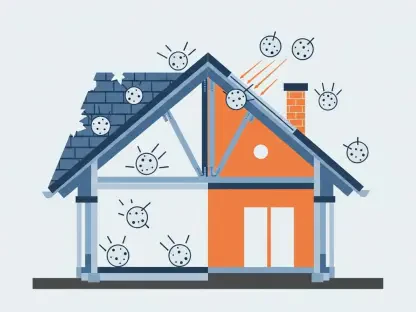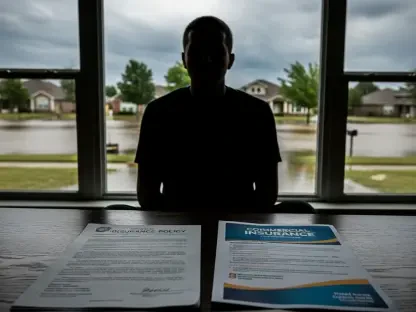In the ever-evolving construction industry, where precision and accountability are paramount, below-ground waterproofing stands out as a critical area fraught with risk and complexity, and recent regulatory changes have only heightened the stakes. Transformative legislation like the Building Safety Act in the UK has reshaped the responsibilities of professionals such as specifiers and principal designers, placing them under intense scrutiny to ensure compliance across a building’s lifecycle. Waterproofing failures can lead to devastating consequences, from structural damage and health hazards to financial losses that can cripple a project or a career. Amid this challenging landscape, Professional Indemnity (PI) insurance has become an indispensable tool, offering not just financial protection but also a hallmark of professional credibility. This article delves into the pivotal role of PI insurance in safeguarding waterproofing projects, exploring how it intersects with regulatory demands, technical competence, and strategic risk management to ensure safety and stability in construction endeavors.
Navigating New Regulatory Landscapes
The construction sector is witnessing a seismic shift in accountability, driven by groundbreaking regulations that redefine professional roles in waterproofing projects. Under frameworks like the Building Safety Act, specifiers are often positioned as principal designers, tasked with overseeing material and design compliance throughout a building’s entire lifespan. This expanded responsibility means that any oversight or error in waterproofing can result in severe legal and financial repercussions, lingering long after a project’s completion. The heightened scrutiny demands that professionals not only understand the technical intricacies of their work but also secure robust safeguards against potential liabilities. PI insurance emerges as a critical ally in this context, providing a buffer against claims while reinforcing a commitment to meeting stringent industry standards. Without such protection, the risks of non-compliance can be catastrophic, threatening both project outcomes and professional reputations in an increasingly regulated environment.
Beyond the immediate pressures of new legislation, the long-term implications of these regulatory changes are reshaping how professionals approach their roles in construction. The emphasis on lifecycle accountability means that decisions made during the design and specification phases are subject to evaluation years down the line, particularly in high-risk areas like below-ground waterproofing. A failure to adhere to updated guidelines can expose specifiers to lawsuits, penalties, and reputational damage that could have been mitigated with proper coverage. PI insurance not only addresses these financial exposures but also serves as a signal to clients and stakeholders that a professional is prepared to stand behind their work. As regulations continue to evolve, staying ahead of compliance requirements becomes a strategic necessity, with insurance acting as both a protective measure and a competitive advantage in demonstrating reliability and foresight in managing complex waterproofing challenges.
Understanding the High Stakes of Waterproofing Failures
Waterproofing failures represent some of the most severe and costly challenges in the construction industry, far surpassing superficial defects in their potential impact. When water infiltrates below-ground structures, it can erode structural integrity, leading to cracks, corrosion, and even collapse over time, while also creating damp environments that foster mold and pose significant health risks to occupants. The financial toll is equally daunting, with repair costs, business interruptions, and legal claims often escalating into hundreds of thousands of dollars. These stakes highlight why waterproofing demands meticulous attention to detail and robust protective strategies. PI insurance plays a vital role here, offering a safety net against the economic fallout of such failures, ensuring that professionals are not left personally liable for damages that could otherwise derail their careers or bankrupt their firms in the face of inevitable human error or unforeseen issues.
Moreover, the ripple effects of waterproofing failures extend beyond immediate financial losses, often triggering long-term consequences for all stakeholders involved in a project. Legal disputes arising from water damage can drag on for years, draining resources and damaging professional relationships while halting future opportunities. The reputational harm can be just as severe, as clients and partners may hesitate to engage with firms associated with past failures, regardless of the circumstances. This underscores the necessity of comprehensive risk management tools like PI insurance, which not only cover the monetary aspects of claims but also help maintain trust in a professional’s ability to deliver safe, reliable outcomes. By addressing both the tangible and intangible costs of waterproofing mishaps, such coverage ensures that specifiers and designers can focus on their technical expertise without the constant fear of devastating personal or professional repercussions looming over every decision.
Emphasizing Competence and Compliance
In today’s construction landscape, professional competence in specialized areas like waterproofing is not just a desirable trait but a regulatory mandate that can make or break a project. Specifiers and designers must demonstrate a thorough understanding of technical requirements or risk severe penalties under new accountability frameworks. This includes adhering to established standards, such as those protecting below-ground structures from water ingress, which provide a proven blueprint for effective design and installation. Deviating from these guidelines without a well-documented, defensible rationale can significantly increase the likelihood of failure, exposing professionals to heightened liability. PI insurance often ties directly into this dynamic, as coverage may depend on demonstrating adherence to industry norms. For those lacking specialized expertise, the path forward involves either upskilling or collaborating with experts to ensure compliance, thereby reducing risk and reinforcing project safety.
Equally important is the role of continuous education and adaptation in maintaining competence amid evolving standards and technologies in waterproofing. As new materials and methods emerge, professionals must stay informed to avoid outdated practices that could lead to non-compliance or performance issues. Regulatory bodies are increasingly vigilant, requiring detailed documentation of design decisions to trace accountability over a building’s lifecycle. Failure to meet these expectations can void insurance protections or lead to claims that are not covered under standard policies, leaving individuals exposed to significant financial burdens. PI insurance, when paired with a commitment to ongoing learning and strict adherence to guidelines, becomes a powerful shield, validating a professional’s dedication to quality and safety. This combination not only mitigates risks but also builds confidence among clients and partners, ensuring that waterproofing projects are executed with the highest standards of care and precision.
Harnessing the Strength of Indemnity Coverage
Professional Indemnity insurance stands as a cornerstone of risk management for construction professionals navigating the complexities of waterproofing projects. It provides essential protection against the financial consequences of design errors, oversights, or non-compliance with regulations, which can otherwise lead to crippling lawsuits or settlements. Beyond its role as a fiscal safeguard, this coverage also enhances a professional’s standing, signaling to clients and collaborators a serious commitment to accountability and client protection. However, a critical challenge arises when existing PI policies fall short of covering the specialized risks associated with below-ground waterproofing. Many specifiers discover gaps in their insurance that leave them vulnerable to claims specific to this high-risk area. Addressing this requires a proactive review of policy terms and, often, securing additional coverage tailored to the unique demands of such technical work to avoid unexpected exposure.
Additionally, the evolving nature of construction risks means that PI insurance must be regularly reassessed to align with current industry challenges and regulatory expectations. As accountability frameworks expand, the scope of potential claims grows, encompassing not just immediate project failures but also long-term issues that surface years later. Professionals must ensure their coverage evolves alongside these shifts, incorporating provisions for emerging risks like environmental factors or innovative waterproofing techniques that may not be addressed in standard policies. This adaptability is crucial for maintaining comprehensive protection and avoiding disputes with insurers over uncovered liabilities. By prioritizing robust, up-to-date PI insurance, specifiers and designers can confidently tackle the intricacies of waterproofing, knowing they have a reliable defense against the unpredictable nature of construction claims, thereby safeguarding both their financial stability and professional integrity.
Building Alliances with Waterproofing Experts
Forming strategic partnerships with specialized waterproofing companies offers a practical approach to managing the intricate liabilities inherent in below-ground projects. Firms with deep industry experience and extensive PI coverage can assume critical design responsibilities, ensuring that projects meet regulatory requirements from the earliest stages. These collaborations provide access to third-party-verified products and expert guidance, significantly reducing the risk of failure while transferring a portion of liability away from specifiers. Such arrangements are particularly valuable in an era of heightened accountability, where a single misstep can lead to substantial financial and reputational damage. By aligning with trusted specialists, professionals can focus on broader project goals, confident that the technical nuances of waterproofing are handled by those with proven expertise, thereby enhancing overall safety and compliance.
Furthermore, these partnerships foster a collaborative environment where knowledge-sharing and innovation drive better outcomes for waterproofing initiatives. Working closely with specialists allows specifiers to stay abreast of cutting-edge solutions and best practices, which can be integrated into project designs to preempt potential issues. This proactive approach not only mitigates risks but also positions professionals as forward-thinking leaders in their field, capable of delivering projects that stand the test of time. The backing of comprehensive PI coverage from specialist partners adds an extra layer of security, ensuring that any unforeseen challenges are addressed without derailing the project or exposing individuals to undue risk. Ultimately, these alliances prove instrumental in navigating regulatory complexities, setting a precedent for how collaboration and shared responsibility can transform high-stake areas of construction into models of safety and reliability for future endeavors.









